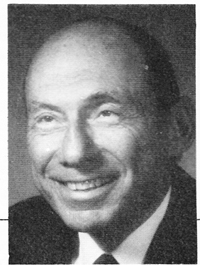The State of-the-Art Orthodontist
Most orthodontists would describe themselves as offering conventional orthodontic treatment to children and adults. Virtually all practices treat some adults. Possibly 65 percent do some surgical orthodontics, 55 percent do some functional appliance treatment, 50 percent do some TMJ therapy, 35 percent do some lingual orthodontics, and a small number offer a variety of treatments loosely gathered under the catch-all of holistic therapy. It is possible that one might specialize in any of these, but is it required that one be proficient in all of them in order to be considered a state-of-the-art orthodontist?
It is a problem that becoming proficient in any of them is a do-it-yourself project. You would be hard-pressed to find even one educational institution that teaches all these subjects and, barring extension of graduate training to a three- or four-year course, it would be difficult to do so. As a result, acquiring knowledge and skills in these areas is a random walk, and it is difficult to tell when one has reached a level of proficiency. Even with diligent study of journals and books, and attendance at courses and meetings, it is up to each individual to organize a motley collection of information and decide which of the techniques and procedures will be best for each patient. This is no small task in one field, let alone five. Nevertheless, before one accepts or rejects these therapies and before one uses them on patients, it is essential to study the available knowledge in each area. A state-of-the-art orthodontist knows what is to be known in all the areas of the specialty.
This formidable task must be approached in an organized way with a plan for professional growth. The plan can be structured horizontally or vertically--studying two or more of the areas simultaneously or studying one area exclusively. Which method is chosen may depend on each individual's starting point, but the task requires setting some priorities.
Because surgical orthodontics is a team effort in which the orthodontist's role is closest to his everyday work--with some specialized diagnostics--its study can be pursued along with the study of TMJ and occlusion, which deserve the highest priority. Once a solid base in these areas has been gained, their study can continue on a less intensive level, and other areas may be added such as functional appliances, lingual orthodontics; and holistic therapies. if one plans to treat adults, especially older adults, it is necessary to have a substantial working knowledge of periodontics and a working relationship with one or more qualified periodontists.
An orthodontist may decide that he or she can wait until the smoke clears in functional appliances, lingual orthodontics, and holistic therapies, but there is not that same luxury in the other areas. This applies especially to TMJ . Although the TMJ waters seem muddy indeed, there is a clear injunction upon orthodontists to avoid contributing to TMJ dysfunctions and to help patients who have them. In order to do this, a state-of-the-art orthodontist should be informed about the most recent advances in functional diagnosis and treatment monitoring through electronic equipment that records the status of the musculature surrounding the oral cavity and tracks the movement of the mandible in three dimensions.
With the presently available information about functional appliances, it is self deceptive--if nothing more--to merely select one and place it in a patient's mouth to see what will happen. Never has the concept of a therapeutic diagnosis been on shakier ground. The day may come when it will be more possible to make a dependable selection of cases suitable for functional appliance therapy. Until that day, orthodontists would do well to learn all they can about these appliances and to use them on a carefully limited selection of young patients for efforts to influence growth, and possibly of older patients for treatment of disc displacements and other functional imbalances. Above all, in all cases--including these--success rates must be examined. If chances of success are doubtful, selection of functional appliance therapy should be the patient's decision.
Lingual orthodontics has been a problem for orthodontists. Just when labial orthodontics has achieved a great deal of control of tooth movement, the learning stage of lingual orthodontics seems to throw tooth movement out of control again. Nevertheless, lingual orthodontics is a useful service for people who would not have orthodontic treatment with visible appliances. There is a service to be rendered and a market to be served. It is a question of whether orthodontists will have the patience to persevere with a difficult technique, to become proficient at it, and to improve it.
There is an almost universal lack of consideration of or rejection of holistic therapies. The field has become so encumbered with seemingly weird and outlandish concepts that it probably is too early to expect it to get serious consideration from orthodontists. Nevertheless, it is worthwhile staying in touch with these concepts. Their day may come. With several of these areas or new ones that may come along, there is room for an orthodontist to maintain what Bjorn Zachrisson has called a skeptical but interested mind.
Many orthodontists have built substantial segments of their practices in each of the areas mentioned. Offering a broader range of services has been shown in the JCO Orthodontic Practice Study to be associated with higher incomes and greater numbers of case starts. In economic terms, broadening orthodontic service in this way broadens the orthodontic market at a time when the average orthodontist's share of the child orthodontic market is diminishing.
A plan for professional growth involves a budget of considerable time and expense, but beyond the financial rewards will be the achievement of the status of a state-of-the-art orthodontist, and the ability to offer a state-of-the-art service to your patients.


